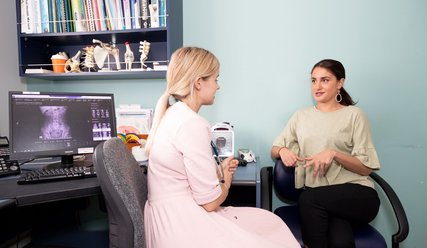Ngā Kawepūrongo
News
Insights, GP profiles, medical opinion and more.
-

GP-owned general practice incentive could open doors for long-term workforce growth
Nov. 30, 2025
-

Puberty blocker prescribing - College position and member guidance
Nov. 25, 2025
-

Changes to ACC forms seeks to simplify processes for GPs
Nov. 20, 2025
-

New Primary Care Pathway to increase GP workforce a win for health care and patients
Nov. 11, 2025
Categories
Media-Releases

30 November 2025 | Media releases
GP-owned general practice incentive could open doors for long-term workforce growth

11 November 2025 | Media releases
New Primary Care Pathway to increase GP workforce a win for health care and patients

9 November 2025 | Media releases
Coroner’s findings questioned by GP College

26 September 2025 | Media releases
Up to 700 GP trainees to benefit from funding boost this year

21 August 2025 | Media releases
Funding round opens for research benefitting general practice

30 July 2025 | Media releases
College of GPs Workforce Survey shows optimistic changes, but still more to be done to address core challenges for the future
Upcoming events
See all eventsPROVIDED UPON REGISTRATION CHRISTCHURCH, NEW ZEALAND | CONTINUING MEDICAL EDUCATION
Axis GP and Practitioner Workshop
26 January 2026 - 26 January 2026
9:00 AM - 12:00 PM
This 3-hour session focuses on ADHD diagnosis and presentation in primary care, how symptoms appear across contexts, how executive-function challenges contribute, and how to begin structured screening within a standard consultation.
View eventPROVIDED UPON REGISTRATION CHRISTCHURCH, NEW ZEALAND | CONTINUING MEDICAL EDUCATION
Axis Assessment Methods Workshop
26 January 2026 - 26 January 2026
1:00 PM - 4:00 PM
This 3 hour session focuses on the practical use of psychometric tools beyond initial screening, including score interpretation, pattern recognition, interview techniques that contextualise results, and identification of safety and risk indicators. The workshop emphasises the role of psychometrics as clinical decision support tools rather than diagnostic instruments, supporting safe, ethical, and defensible practice.
View eventONLINE GOODFELLOW UNIT WEBINAR | CONTINUING MEDICAL EDUCATION
Adult ADHD: From diagnosis to long-term management
03 February 2026 - 03 February 2026
7:30 PM - 8:45 PM
In this FREE webinar, psychiatrist Dr David Codyre will provide practical guidance on continuing ADHD care once treatment has begun.
View eventMore recent articles

9 November 2025 | Media releases
Coroner’s findings questioned by GP College

2 October 2025 | GP Voice
October 2025

26 September 2025 | Media releases
Up to 700 GP trainees to benefit from funding boost this year

11 September 2025 | College and members
GPs want patients to be seen, heard and known

21 August 2025 | Media releases
Funding round opens for research benefitting general practice

14 August 2025 | GP Voice